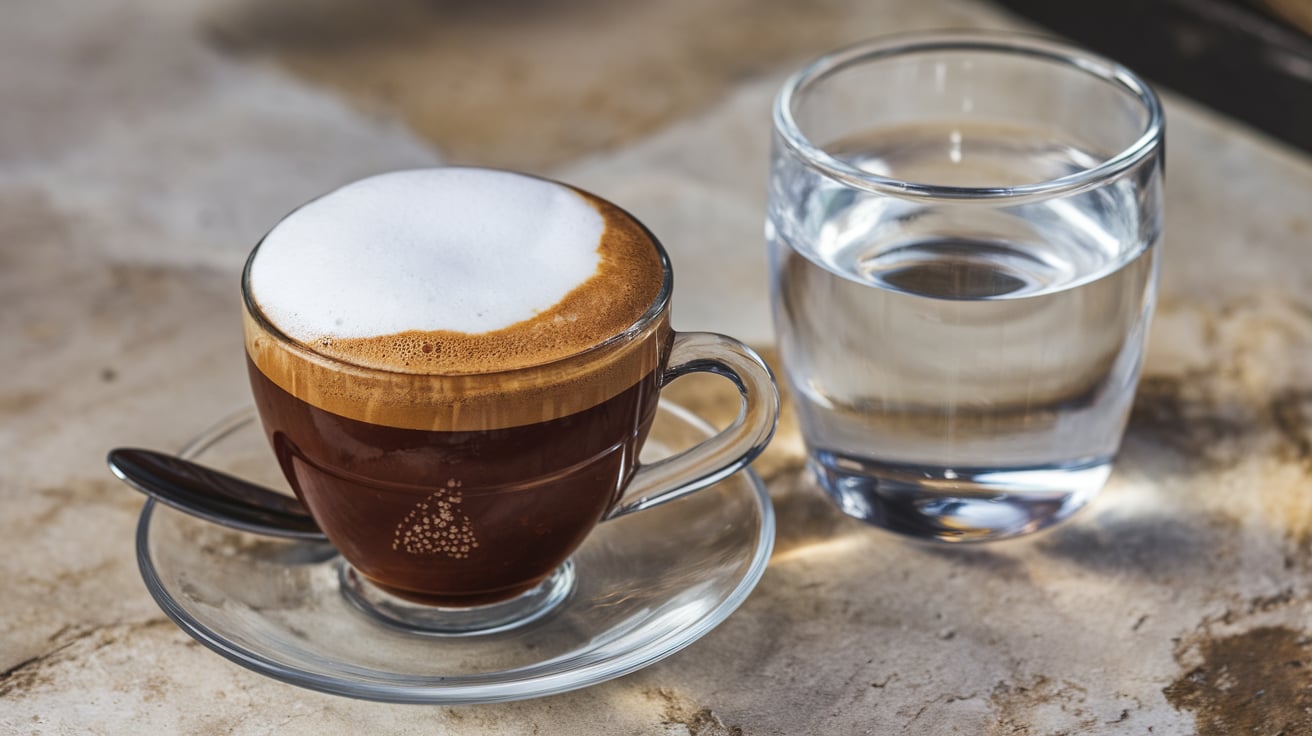Introduction: What is Greek Coffee?
Greek coffee, or Ellinikos Kafes, is a strong and rich coffee traditionally brewed in a briki (a small pot specifically for Greek coffee) and served in a small cup. It has a unique flavor and is known for its foam, called kaimaki, which forms on top of the coffee. Greek coffee is similar to Turkish coffee but has its own method of preparation and cultural rituals.
Unlike espresso or drip coffee, Greek coffee is unfiltered, meaning the finely ground coffee is brewed directly in the water, giving it a rich and robust flavor. It’s typically enjoyed slowly, often accompanied by good conversation and a glass of water.
Ingredients for Greek Coffee
You don’t need many ingredients to make Greek coffee, but quality and technique make all the difference.
Core Ingredients:
- 1 cup cold water (use the demitasse cup you’ll serve the coffee in to measure)
- 1 heaping teaspoon finely ground Greek coffee (you can find this coffee labeled as Greek or Turkish coffee; it should have a powder-like consistency)
- Sugar (optional, and based on desired sweetness)
Equipment:
- A briki (small coffee pot)
- A demitasse cup (small coffee cup, similar to an espresso cup)
- A small spoon for stirring
How to Make Greek Coffee: Step-by-Step Guide
Step 1: Measure the Water
- Start by filling your demitasse cup with cold water. Use this cup to measure out the exact amount of water you need for brewing and pour it into the briki.
Step 2: Add Coffee and Sugar
- Add 1 heaping teaspoon of finely ground Greek coffee to the briki. If you prefer your coffee sweet, add sugar now:
- Sketos: No sugar
- Metrios: 1 teaspoon sugar (medium sweet)
- Glykos: 2 teaspoons sugar (sweet)
- Stir well to combine the coffee and sugar, but do not stir again after this initial mix.
Step 3: Heat the Coffee
- Place the briki over low heat. Heat the coffee slowly and patiently—this is key to achieving a good kaimaki (foam).
- As the coffee heats, you’ll see a froth start to form on the surface. Keep a close eye on the coffee because it can quickly boil over. Do not stir as it heats.
Step 4: Remove from Heat Before Boiling
- Just before the coffee reaches a boil (when the froth rises to the top), remove the briki from the heat. If the froth collapses too much or boils, it will lose its texture and flavor.
- If you’re making more than one cup, pour a little of the froth into each cup first, then fill with the remaining coffee. This ensures an even distribution of froth in each cup.
Step 5: Serve and Enjoy
- Serve the coffee immediately in the demitasse cup. Traditionally, Greek coffee is served with a glass of cold water and sometimes accompanied by a small sweet treat like loukoumi (Turkish delight).
Tips for the Perfect Greek Coffee
- Use a Briki: A briki is essential for making authentic Greek coffee. Its shape allows the coffee to foam properly.
- Grind Matters: Greek coffee requires a very fine grind, similar to powdered sugar. You can buy pre-ground Greek or Turkish coffee, or grind your own beans to this consistency.
- Low and Slow Heat: Heating the coffee slowly over low heat is crucial to achieving a thick froth without boiling too rapidly.
- Do Not Stir While Brewing: Once you’ve mixed the coffee, sugar, and water in the briki, resist the temptation to stir again. Let the coffee foam naturally as it heats.
Sweetness Levels and Styles of Greek Coffee
Greek coffee can be made in different sweetness levels. Here are the most common styles:
- Sketos (σκέτος): Black, no sugar.
- Metrios (μέτριος): Medium sweetness, 1 teaspoon of sugar.
- Glykos (γλυκός): Sweet, 2 teaspoons of sugar.
- Variglykos (βαρύγλυκος): Extra sweet and strong, often with a thicker layer of foam.
Serving Greek Coffee: Tradition and Etiquette
Greek coffee is more than just a drink—it’s a cultural experience meant to be savored slowly. It’s often served during social gatherings or after meals, with time set aside to enjoy the flavor and company. Here’s how to enjoy Greek coffee the traditional way:
- Sip Slowly: Greek coffee is not meant to be gulped down quickly. Sip it slowly, enjoying the froth on top and the strong flavor of the brew.
- Let the Grounds Settle: Since the coffee is unfiltered, there will be grounds at the bottom of your cup. Allow these grounds to settle before drinking, and avoid stirring once served.
- Accompany with Sweets: Greek coffee is often served with a small sweet treat like baklava, kourabiedes (Greek butter cookies), or loukoumi (Turkish delight).
Variations of Greek Coffee
While traditional Greek coffee is a classic, you can experiment with different flavor variations or add-ons:
1. Cardamom-Infused Greek Coffee
- Add a pinch of ground cardamom to the briki along with the coffee for a spiced twist.
2. Greek Coffee with Cinnamon
- For a warming flavor, sprinkle a small amount of ground cinnamon on top of the froth before serving.
3. Iced Greek Coffee (Frappe-Style)
- While not a traditional method, you can blend your brewed Greek coffee with ice and milk for a refreshing iced frappe.
Conclusion: Enjoy Your Homemade Greek Coffee
Making Greek coffee at home is a simple yet rewarding process that brings out the rich flavor and tradition of this beloved Mediterranean brew. By following these steps, you’ll be able to enjoy a cup of authentic Greek coffee complete with its frothy top and full-bodied taste.

